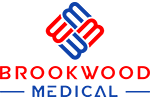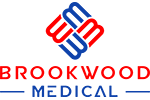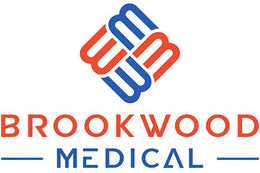The Future of Face Masks: Trends Beyond the Pandemic

Frequently Asked Questions
1. How has the perception of face masks changed since the pandemic?
2. Will people continue to wear face masks post-pandemic?
3. What innovations can we expect in sports face masks?
4. How might businesses adapt to the demand for face masks?
5. What role will education play in the future of mask-wearing?
The COVID-19 pandemic has fundamentally altered our daily lives, presenting new challenges and changing how we approach health and safety. One of the most visible symbols of this change has undoubtedly been the face mask. As we navigate the post-pandemic world, the question arises: what does the future hold for face masks, particularly the sports face mask? In this blog post, we will explore the evolution of face masks, their role in society post-pandemic, and how they are likely to transform going forward.
The Shift in Perception
Before the pandemic, wearing a mask was typically associated with specific medical conditions or industries. However, the COVID-19 crisis redefined their purpose and significance. Masks became a critical tool for preventing viral transmission, and this led to an overwhelming acceptance of their use in public settings.
Post-pandemic, many people may continue to wear masks during flu season or when experiencing respiratory symptoms. This shift highlights a broader understanding of personal health responsibility. The concept of wearing a sports face mask during physical activity may also become more mainstream, particularly for those with allergies or respiratory issues.
Face Masks in Sports and Fitness
One niche area that has gained traction is the use of sports face masks. Athletic activities can produce respiratory droplets, which makes the case for wearing a mask while exercising stronger. Here are a few considerations regarding the future of face masks in sports:
Enhanced Performance Masks
As the fitness industry evolves, we can expect a surge in technologically advanced sports face masks. These masks may feature breathable materials that wick sweat, prevent overheating, and offer enhanced filtration. Innovations in fabric technology can make masks more comfortable and effective for athletes, thus boosting performance while maintaining safety.
Regulatory Guidelines
Post-pandemic, sports organizations and fitness facilities may implement regulations requiring masks for indoor activities or certain outdoor situations. This could lead to an increased demand for specialized sports face masks that meet safety standards while allowing athletes to perform at their best.
Social Interaction and Community Building
Wearing a mask while participating in sports can foster a sense of solidarity. Athletes can express their commitment to safety, encouraging teammates and fans to follow suit. Mask-wearing can become a cultural norm within sports communities, further solidifying bonds among athletes and supporters.
Fashion Meets Functionality
As consumers become accustomed to wearing masks, the market is witnessing a surge in stylish and fashionable options. No longer are masks merely utilitarian; they are becoming fashion statements.
Customization and Personal Expression
One interesting outcome of the pandemic has been the customization of face masks. People are opting for masks that reflect personal style, whether it’s through vibrant colors, cool patterns, or unique designs. The concept of a sports face mask can also merge functionality with style, leading to a range of options that mirror an athlete’s personality.
Eco-Friendly Materials
Another emerging trend is the use of sustainable materials for face masks. As consumers grow more environmentally conscious, masks made from recycled or sustainable fabrics are gaining popularity. This preference not only benefits the planet but also attracts health-conscious consumers who seek lasting, eco-friendly products.
The Role of Technology
With advancements in technology, the future of face masks is set to change dramatically. We can anticipate a range of innovative features, particularly for sports face masks.
Smart Masks
As we look to the future, "smart" masks, equipped with sensors and health monitoring technology, could become a standard. These could track breathing patterns, heart rates, and even environmental air quality, providing athletes with valuable insights to optimize their performance and ensure safety.
Integrated Filtration Systems
The demand for high-quality filtration will likely increase, leading to the development of masks with integrated filtration systems. Such innovations could ensure that athletes are protected from airborne pollutants, allergens, and viruses while on the field or in the gym.
Regulatory and Health Perspectives
The future of face masks is not solely influenced by consumer trends; regulatory bodies will also play a significant role. Health guidelines regarding mask-wearing may persist in medical and public settings, particularly during respiratory illness seasons. This ongoing concern for health could enhance the credibility and necessity of masks, including sports face masks.
Health Education and Awareness
The pandemic has significantly increased health awareness among the general public. Educational campaigns could teach individuals about the importance of masks in various scenarios, including participation in sports. Schools and fitness centers might advocate for the use of face masks, ingraining them into the fabric of health culture.
Long-Term Impact on Public Spaces
Look for masks to remain essential in crowded public areas, even as restrictions ease. Public transportation, airports, and crowded events may continue to encourage or mandate mask-wearing, making high-quality sports face masks a common sight beyond the realm of just athletic events.
The Business Perspective
From a business standpoint, the demand for face masks, including sports face masks, offers an exciting opportunity. Entrepreneurs and established businesses alike can tap into new markets and niches as consumer needs evolve. Here’s how businesses can adapt:
Diversification of Product Lines
Businesses can broaden their offerings to include not just standard masks but also various styles suited for sports, work, and everyday wear. This could include promotional events or partnerships with athletic brands to co-create masks tailored to specific sports.
Enhanced Online Presence
Shops that embrace e-commerce can target their audiences more effectively through online platforms. Tailoring SEO strategies for products like sports face masks means using relevant keywords to attract a larger audience. Quality content can significantly enhance visibility and engagement in a crowded marketplace.
Community Engagement
Promoting community health initiatives through mask donations or collaborations with local sports teams can improve a brand’s reputation and market reach. Such engagement can help foster loyalty and encourage customers to support your brand further.
People, Places, and Masks
The future of face masks evolves not just around products but the people who wear them—regular folks, busy athletes, and health-savvy consumers alike. As we forge ahead, it’s essential to consider how these masks will impact our interactions, relationships, and lifestyles.
Education in Schools
Educational institutions may continue to incorporate mask education into their health curricula. Teaching kids the importance of masks and personal responsibility toward their health can create lifelong habits that could last beyond the pandemic.
Reimagining Events and Gatherings
As social gatherings return, the way we celebrate may transform. Mask-wearing may become commonplace at events, particularly large public gatherings. Sports games and festivals will likely instill safety measures that include face coverings, reinforcing a culture of community care.
Rethinking the Way We Breathe
The pandemic has transformed our relationship with respiratory health. Masks have become symbols of protection, awareness, and responsibility. As we move toward a future where personal health dictates daily choices, the use of face masks, particularly sports face masks, will likely remain prevalent.
In this evolving landscape of health consciousness and environmental awareness, consumers will seek comfortable, stylish, and effective masks that suit various lifestyles, including athletic endeavors. The future is not just about fighting viruses; it’s about enhancing quality of life through conscious choices.
The face mask, which was once seen as merely protective gear, is now viewed as an integral part of health, beauty, and fitness culture. Whether you’re an athlete striving for peak performance or someone looking for stylish everyday wear, the future of face masks promises to blend health benefits with fashion and technology.
As we navigate this shift together, let’s embrace the creativity and potential that lies ahead. Masked and empowered, we can forge a path toward a safer, healthier, and more inclusive future.






